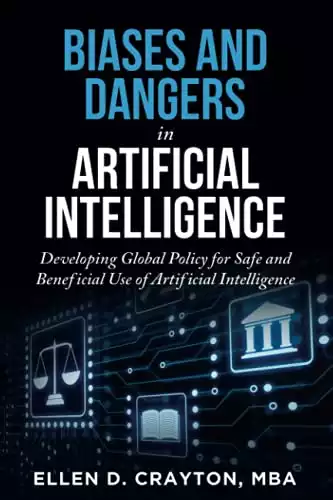Introduction
Artificial Intelligence (AI) is transforming the way we interact with technology across numerous sectors such as healthcare, finance, and transportation. While the technology promises immense benefits, there are also considerable challenges. One of the most significant issues facing AI adoption is the enigma of its inner workings, often referred to as the “black box” problem.
AI technologies are based on complex algorithms and mathematical models that are not easily understood even by experts in the field. As AI continues to integrate into critical decision-making systems, the lack of understanding about how it arrives at certain conclusions becomes a key concern. Understanding these algorithms is crucial for ethical implementation, risk assessment, and potential regulation.
Despite numerous efforts to develop explainable AI systems, many AI technologies remain opaque. As we proceed with the adoption of AI across various sectors, it becomes crucial to address this lack of transparency. Failure to do so could result in ethical dilemmas, regulatory hurdles, and a general mistrust of the technology among the public.
Also Read: Undermining Trust with AI: Navigating the Minefield of Deep Fakes
The Black Box
The concept of a “black box” is commonly invoked to discuss algorithmic systems where the path from input to output is neither fully understood nor easily articulated. This is particularly true for neural networks and other deep learning techniques. These systems attempt to emulate human thinking, but the mechanisms by which they reach their conclusions often elude explanation.
This opacity is more than just a theoretical concern; it has tangible repercussions across multiple industries. Take healthcare as an example: If an AI system recommends a specific medical treatment but cannot explain its reasoning, ethical issues inevitably arise. In such vital scenarios, grasping the ‘why’ behind algorithmic decisions is as important as the decisions themselves.
The obscure nature of these algorithmic systems also complicates matters of accountability and governance. When an adverse event occurs due to an AI-generated decision, attributing responsibility becomes challenging. Is the fault with the developers who programmed the AI, the people operating it, or the elusive algorithm at its core? These questions become exceedingly hard to answer when the inner processes of the algorithm are shrouded in mystery, highlighting the need for algorithmic governance and Interpretable Models.
Also Read: The Rise of Intelligent Machines: Exploring the Boundless Potential of AI
Explainable AI
The quest to demystify the so-called black box of AI has given rise to the field of ‘explainable AI.’ The goal is to design AI systems capable of not only making choices but also elucidating the logic behind those choices in human-understandable terms. This is no small feat, as the complexity of current algorithms often defies straightforward explanation.
The drive for explainable AI is still in its early stages but holds significant promise. Research in this area focuses on various strategies such as algorithmic governance and model simplification. The objective is to foster AI systems that enjoy human oversight and are therefore more trustworthy and reliable for end-users.
While achieving total Transparency of AI remains a lofty goal, there’s value in partial or ‘meaningful’ transparency. Some researchers work on approximation methods to create simplified models that, while not entirely precise, provide useful insight into the AI’s decision-making framework. This kind of transparency, even if partial, can make the AI system more understandable and trusted by its human users.
Also Read: Dangers of AI
Impact on Trust and Transparency
Transparency of AI is a critical factor affecting public trust in these technologies. When the inner workings of AI are unclear, especially in critical sectors like healthcare and finance, skepticism among the general population increases. For AI systems to be embraced widely, earning this trust is crucial.
Obscure decision-making processes in AI can have real-world repercussions that go beyond mere skepticism. Consider the case of a self-driving car involved in an accident; if it’s unclear how the vehicle’s AI made its choices, who takes the blame? Questions like these degrade trust in not just the specific product but the technology as a whole, raising ethical issues that need to be addressed.
To restore this trust, there’s an immediate need for AI models that are not just effective but also transparent and explainable. Meaningful transparency in this context goes beyond just making the code open-source. It involves comprehensive documentation, third-party audits, and potentially, a level of human oversight and algorithmic governance to reassure decision makers and the public that AI systems are both safe and reliable.
Implications of AI’s Hidden Algorithms
When Artificial intelligence systems operate as black boxes, their internal mechanisms are not easily understood, raising serious questions about the fairness and impartiality of their algorithmic decisions. Fears emerge that such hidden algorithms could amplify existing social prejudices. For instance, an AI algorithm employed in hiring could unintentionally sideline female or minority candidates, exacerbating present disparities.
Algorithmic transparency is not just about clarity in decision-making but also allows for the auditing and rectification of the algorithm. When an algorithm generates biased or unfair results, the opacity of its workings hinders our ability to pinpoint the issue and make corrections. In such situations, AI becomes a gatekeeper that operates without public scrutiny, leaving us in the dark about its vast amounts of decision-making power.
The concealed operations of algorithmic systems also pose challenges related to data privacy. If the way an AI system interprets and utilizes personal data remains elusive, there’s an increased risk of misuse. This could lead to unauthorized data sharing or decisions made on inaccurate or misleading data interpretations. Given the rise of AI-based surveillance systems, the lack of Transparency of AI further complicates public opinion on the governance and ethical implications of these technologies.
Regulatory Concerns
AI has reached a point where many believe regulatory oversight is necessary. However, a lack of transparency poses challenges for policymakers who are trying to catch up with the rapid advances in AI technology. If the experts designing and implementing these systems don’t fully understand them, crafting effective policy becomes a Herculean task.
Current regulatory frameworks for technology are ill-equipped to handle the nuances of AI, especially when the algorithms themselves are not transparent. For regulation to be effective, a detailed understanding of the inner workings of these systems is imperative. Regulatory agencies are considering various models, from self-regulation within the tech industry to more strict government-led regulation.
Some countries are beginning to incorporate AI transparency into their regulatory frameworks. For example, the European Union’s General Data Protection Regulation (GDPR) includes a “right to explanation,” where individuals can ask for an explanation if they have been affected by a decision made by an automated system. However, the effectiveness of such regulatory measures is still under scrutiny.
Also Read: Top 5 Most Pressing Artificial Intelligence Challenges in 2023
Regulating the Unknown
While the call for regulation is strong, the big question remains: how can you regulate what you don’t understand? One proposal is the introduction of third-party “algorithmic audits,” where an independent body would review and certify AI algorithms. This could ensure that the algorithm meets certain ethical and safety criteria, even if its inner workings are not entirely understood.
Another approach is the use of “sandboxing,” a method where new technologies can be tested in controlled, limited environments to understand their impact before full-scale implementation. Regulatory bodies could use sandboxing to gain insights into how an AI system operates, which would inform the creation of more focused and effective regulations.
Some experts advocate for an incremental approach to regulation. Given that AI technologies are diverse and continually evolving, trying to apply a one-size-fits-all regulation may not be effective. Instead, industry-specific guidelines could be more successful, at least as a starting point for broader regulation.
Addressing the Black Box Problem
Addressing the black box conundrum in Artificial intelligence systems requires multiple approaches. One method involves creating “transparent algorithms” that are inherently designed to offer insights into their decision-making mechanics. While these Interpretable Models do provide a level of algorithmic transparency, they often compromise on performance. This trade-off might be unacceptable in high-risk AI systems where decision accuracy is paramount, such as in healthcare diagnostics or autonomous vehicles.
A different avenue focuses on “post-hoc” explainability, providing clarifications for algorithmic decisions after they’ve been made. Techniques like Local Interpretable Model-agnostic Explanations (LIME) and SHAP (SHapley Additive exPlanations) help to shed light on specific decision pathways. These tools try to strike a balance between algorithmic effectiveness and transparency, allowing users to make more informed decisions without severely impacting the performance of algorithmic models.
The establishment of industry-wide standards for AI transparency also holds promise as a broader solution. Academic and professional organizations are actively working to formulate benchmarks and best practices for explainable and accountable AI. These standards could act as a roadmap for both developers and users, setting a foundational level of transparency that should be met. This, in turn, could mitigate privacy concerns by setting a consistent, understandable framework for how AI systems make decisions.
Also Read: Big Data vs. Small Data: What’s the Difference?
Rethinking Transparency
The degree of transparency required in Artificial Intelligence systems is not a one-size-fits-all proposition and often hinges on the application’s impact and risk factors. In low-stakes situations like movie recommendation algorithms, the need for full transparency may be less pressing. However, High-risk AI systems such as those deployed in healthcare, finance, or criminal justice demand a far greater level of transparency to ensure ethical and secure utilization. This varying need for disclosure in different scenarios has led to the concept of “contextual transparency,” which argues that transparency requirements should be tailored to the specific application at hand.
Contextual transparency offers a more flexible approach to algorithmic systems, providing just enough information to meet ethical and safety standards without overwhelming the user or compromising proprietary algorithms. For instance, black box models might be acceptable in scenarios where the consequences of algorithmic decisions are less severe, but in high-stakes environments, more open algorithmic models may be necessary. The idea is to offer transparency measures that are directly proportional to the risk and impact of the AI system being deployed. Careful consideration needs to be given to what level of transparency is both sufficient and practical for each specific use-case.
In a landscape with an increasing diversity of AI applications, thinking of transparency as a spectrum rather than an absolute could be a more practical approach. This kind of flexible, context-based strategy can help to address public opinion and ethical concerns more effectively. By adopting a nuanced, application-specific framework for transparency, we can aim for a future where AI is both effective and ethically sound.
Conclusion
The enigmatic quality of many AI systems, particularly deep learning models, poses significant ethical, practical, and privacy concerns that demand immediate attention. Despite advances in the area of explainable AI, achieving full algorithmic transparency remains an ambitious goal. Crafting new technologies, regulations, and best practices to improve the Transparency of AI is a critical step in its ethical and responsible implementation.
Tackling the issue of transparency isn’t a simple task; it involves a complex interplay among policymakers, researchers, and the tech industry. Human oversight is needed in developing more understandable AI systems and in revising regulations to handle the unique challenges posed by these black box models. Alongside this, fostering public trust and enabling informed decisions are essential components of this intricate equation. The call to decipher the black box is amplified by AI’s vast amounts of influence in our day-to-day lives.
By encouraging a collaborative approach that includes various stakeholders, we edge closer to a scenario where AI technologies can be both effective and transparent. Ensuring this transparency is crucial for democratic participation, safeguarding fundamental rights, and building a level of public trust that will permit the more ethical utilization of AI.
References
Müller, Vincent C. Risks of Artificial Intelligence. CRC Press, 2016.
O’Neil, Cathy. Weapons of Math Destruction: How Big Data Increases Inequality and Threatens Democracy. Crown Publishing Group (NY), 2016.
Wilks, Yorick A. Artificial Intelligence: Modern Magic or Dangerous Future?, The Illustrated Edition. MIT Press, 2023.




